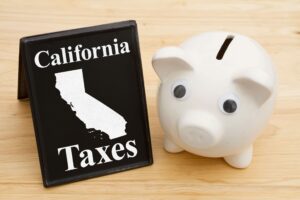
Determine your company’s change in net working capital (𐤃 NWC) by comparing the balance sheets from two consecutive periods, such as fiscal quarters or years. Calculate the NWC for each period by subtracting current liabilities from current assets. Then, subtract the earlier period’s NWC from the later period’s NWC to find the change in NWC. Purchase of Equipment is recorded as a new $5,000 asset on our income statement. It’s an asset, not cash—so, with ($5,000) on the cash flow statement, we deduct https://www.bookstime.com/ $5,000 from cash on hand.
How Are Cash Flows Different Than Revenues?
- The direct method adds up all of the cash payments and receipts, including cash paid to suppliers, cash receipts from customers, and cash paid out in salaries.
- A positive CFFA suggests that a company generates adequate cash to meet its immediate obligations, reducing its dependence on external funding.
- That will reduce accounts payable, which is also a negative adjustment to FCF.
- If you run a pizza shop, it’s the cash you spend on ingredients and labor, and the cash you earn from selling pies.
- This information is important in making crucial decisions about spending, investments, and credit.
As an accountant prepares the CFS using the indirect method, they can identify increases and decreases in the balance sheet that are the result of non-cash transactions. From this CFS, we can see that the net cash flow for the 2017 fiscal year was $1,522,000. The bulk of the positive cash flow stems from cash earned from operations, which is a good sign for investors. It means that core operations are generating business and that there is enough money to buy new inventory. Analyzing changes in cash flow from one period to the next gives the investor a better idea of how the company is performing, and whether a company may be on the brink of bankruptcy or success. The CFS should also be cash flow from assets equals: considered in unison with the other two financial statements (see below).
Cash Flow Statement (CFS)

Securing favorable credit terms as a buyer can help you keep cash on-hand for longer. For example, rather than operating on net 15 payment terms, you could push to operate on net 30 payment terms, giving yourself more time to pay, which can improve your cash flow. Alternatively, perhaps a company’s suppliers are not willing to extend credit as generously and now require faster payment. That will reduce accounts payable, which is also a negative adjustment to FCF.
Get in Touch With a Financial Advisor

A cash flow statement is one of the most important accounting documents for small businesses. With the assets and liabilities side of the balance sheet complete, all that remains is the shareholders’ equity side. The two methods by which cash flow statements (CFS) can be presented are the indirect method and direct method.
- A cash flow statement tracks the inflow and outflow of cash, providing insights into a company’s financial health and operational efficiency.
- In this article, we’ll show you how the CFS is structured and how you can use it when analyzing a company.
- Diversifying your assets can make your profit and revenue more controllable, predictable, and ultimately reduce risk when it comes to your cash flow.
- Then, subtract the earlier period’s NWC from the later period’s NWC to find the change in NWC.
- The cash flow statement shows the amount of cash and cash equivalents entering and leaving a company.
- For investors, the CFS reflects a company’s financial health, since typically the more cash that’s available for business operations, the better.
The price-to-cash flow (P/CF) ratio is a stock multiple that measures the value of a stock’s price relative to its operating cash flow per share. This ratio uses operating cash flow, which adds back non-cash expenses such as depreciation and amortization to net income. Free cash flow is left over after a company pays for its operating expenses and CapEx. Walmart’s cash flow was positive, showing an increase of $1.09 billion, which indicates that it retained cash in the business and added to its reserves to handle short-term liabilities and fluctuations in the future. Negative cash flow from investing activities might be due to significant amounts of cash being invested in the company, such as research and development (R&D), and is not always a warning sign. In the case of Shania and her magazine, she might decide to move from print to digital, drastically reducing operational costs.

If an item is sold on credit or via a subscription payment plan, money may not yet be received from those sales and are booked as accounts receivable. Cash flows also track outflows and inflows and categorize them by the source or use. Investments in property, plant, and equipment (PP&E) and acquisitions of other businesses are accounted for in the cash flow from the investing activities section. Proceeds from issuing long-term debt, debt repayments, and dividends paid out are accounted for in the cash flow from the financing activities section. It’s the money available to investors, company management, shareholder dividends, and investments back into the business. Cash Flow From Assets refers to the accounting measure that assesses the money derived from or consumed in the business’s operating and investing activities performed by utilizing the company’s assets.
Operating Activities
![]()
So, even if you see income reported on your income statement, you may not have the cash from that income on hand. The cash flow statement makes adjustments to the information recorded on your income statement, so you https://www.facebook.com/BooksTimeInc/ see your net cash flow—the precise amount of cash you have on hand for that time period. While a cash flow statement shows the cash inflow and outflow of a business, free cash flow is a company’s disposable income or cash at hand. However, the indirect method also provides a means of reconciling items on the balance sheet to the net income on the income statement.
. Gather Financial Statements
The cash flow statement will not present the net income of a company for the accounting period as it does not include non-cash items which are considered by the income statement. Look for “cash spent on capital assets” (often titled “Purchases of property, plant, and equipment”), and subtract any money received from selling capital assets. The resulting figure is your NCS, representing the net cash used for or received from investments in the company’s long-term assets.
Be the First to Comment!
You must be logged in to post a comment.
You must be logged in to post a comment.